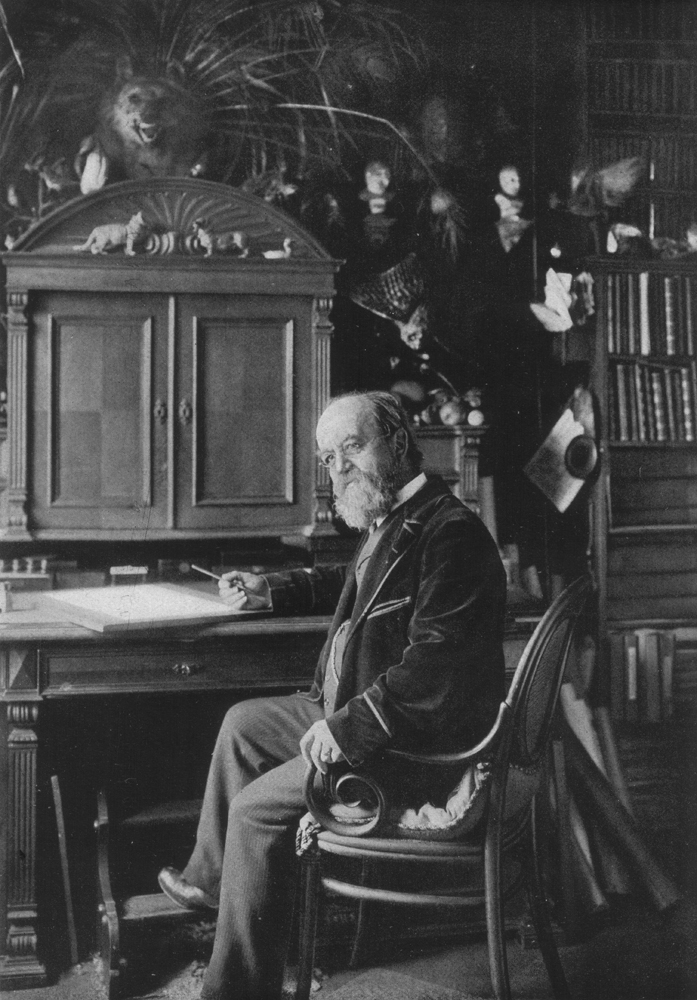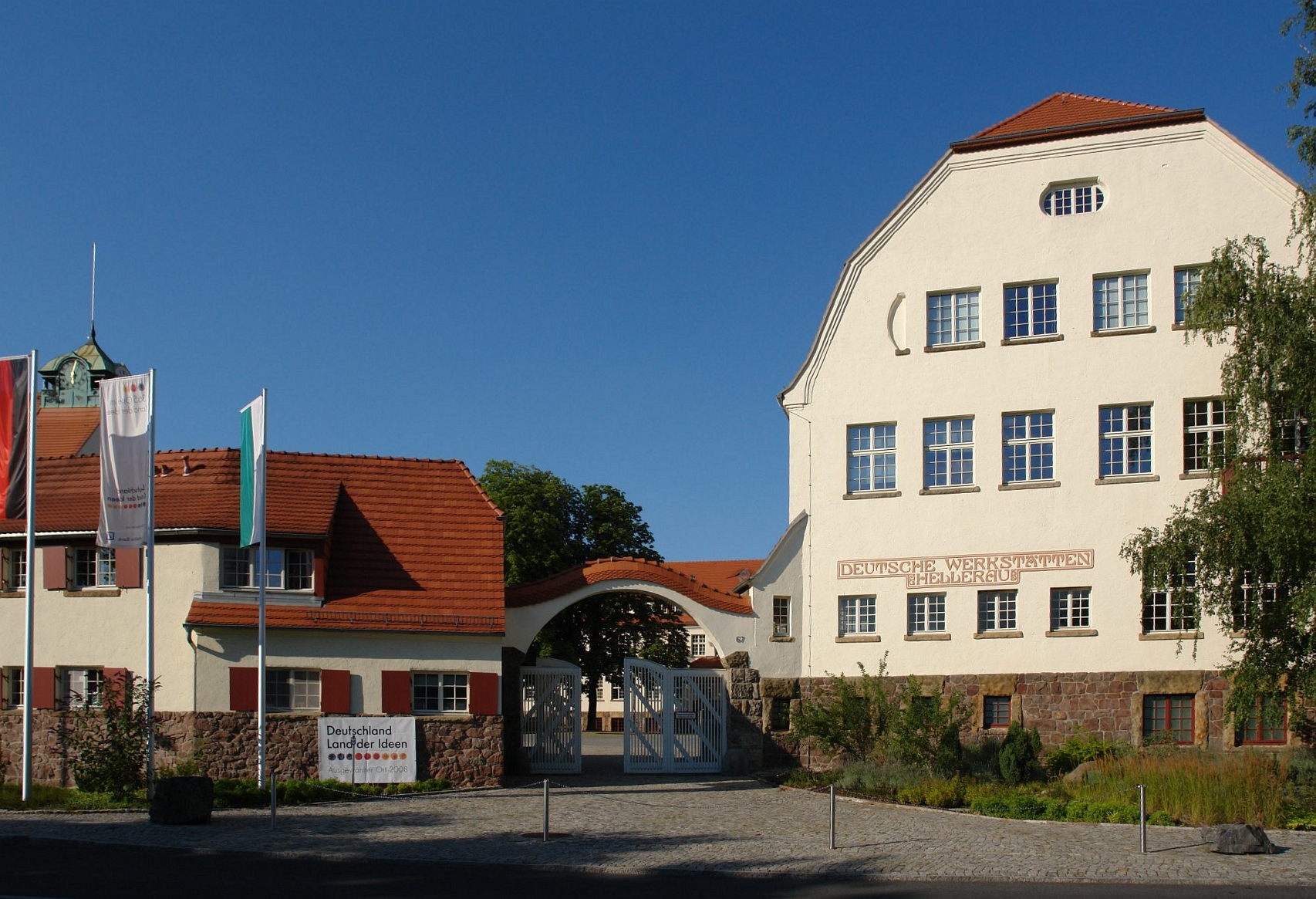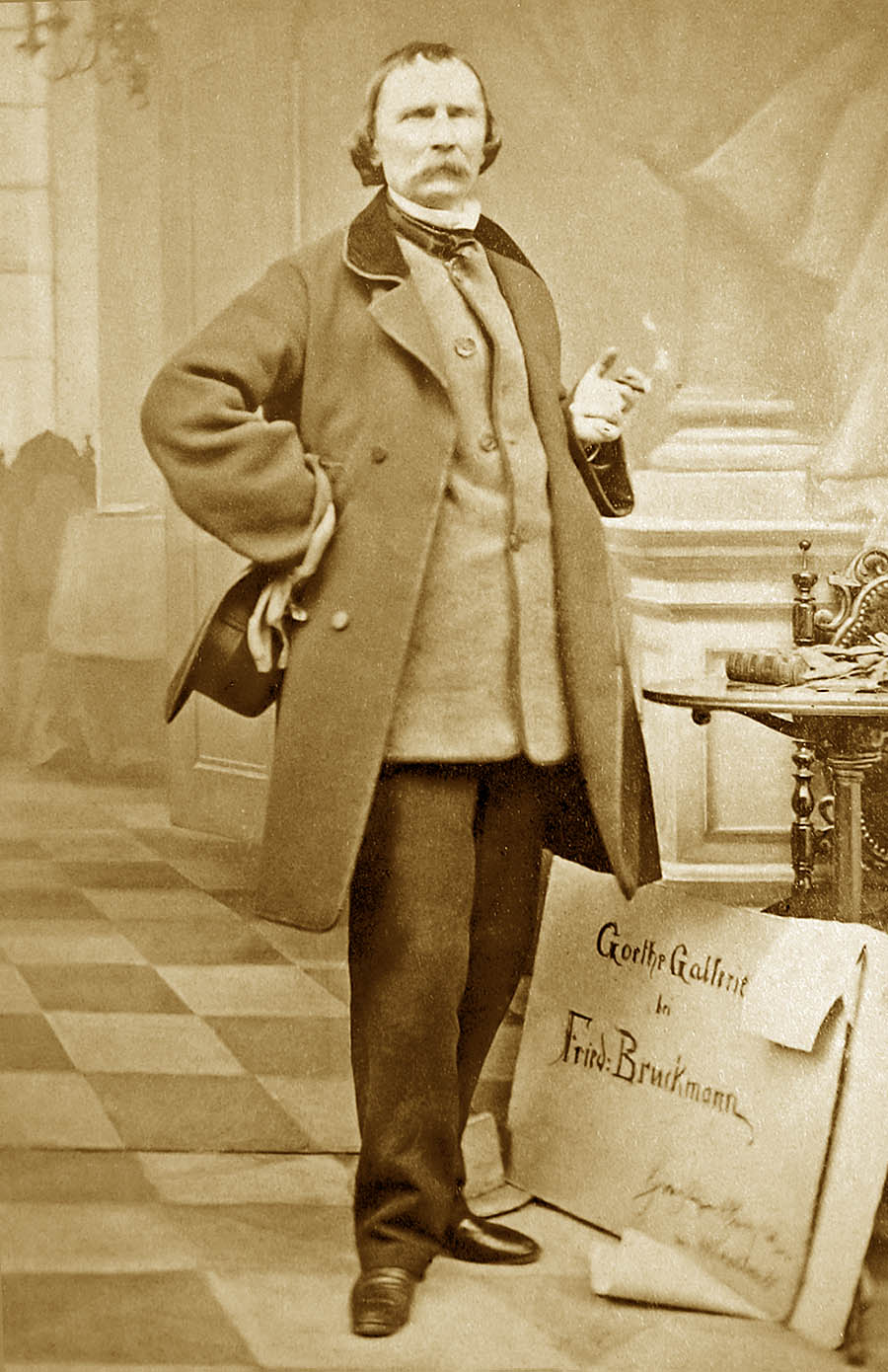|
Fedor Flinzer
Fedor Alexis Flinzer (4 April 1832 in Reichenbach im Vogtland – 14 June 1911 in Leipzig) was an author, educator and one of the greatest German illustrators of the Gründerzeit, who was called Raphael of Cats. Early life Since 1849 Flinzer visited the Dresden Academy of Fine Arts. His teachers were i.a. Adrian Ludwig Richter and Julius Schnorr von Carolsfeld. From 1859 he held a position as an art teacher in Chemnitz, where he also was one of the founders of the ''Kunsthütte'' (art cabin) and a member of the Masonic Lodge ''Zur Harmonie'' (to the harmony). In 1862 Flinzer married Marie Wolfram, a niece of the composer Richard Wagner. Art teacher and municipal inspector of art education in Leipzig 1876 – shortly after he took office as a municipal inspector of art education and after the beginning of his work as an art teacher at the Petrischule in Leipzig – Flinzer summarized his accumulated practical knowledge in his textbook called ''Lehrbuch des Zeichenunterri ... [...More Info...] [...Related Items...] OR: [Wikipedia] [Google] [Baidu] |
Fedor Flinzer
Fedor Alexis Flinzer (4 April 1832 in Reichenbach im Vogtland – 14 June 1911 in Leipzig) was an author, educator and one of the greatest German illustrators of the Gründerzeit, who was called Raphael of Cats. Early life Since 1849 Flinzer visited the Dresden Academy of Fine Arts. His teachers were i.a. Adrian Ludwig Richter and Julius Schnorr von Carolsfeld. From 1859 he held a position as an art teacher in Chemnitz, where he also was one of the founders of the ''Kunsthütte'' (art cabin) and a member of the Masonic Lodge ''Zur Harmonie'' (to the harmony). In 1862 Flinzer married Marie Wolfram, a niece of the composer Richard Wagner. Art teacher and municipal inspector of art education in Leipzig 1876 – shortly after he took office as a municipal inspector of art education and after the beginning of his work as an art teacher at the Petrischule in Leipzig – Flinzer summarized his accumulated practical knowledge in his textbook called ''Lehrbuch des Zeichenunterri ... [...More Info...] [...Related Items...] OR: [Wikipedia] [Google] [Baidu] |
Die Gartenlaube (1879) B 017
''Die Gartenlaube – Illustriertes Familienblatt'' (; ) was the first successful mass-circulation German newspaper and a forerunner of all modern magazines.Sylvia Palatschek: ''Popular Historiographies in the 19th and 20th Centuries'' (Oxford: Berghahn, 2010) p. 41 It was founded by publisher Ernst Keil and editor Ferdinand Stolle in Leipzig, Kingdom of Saxony in 1853. Their objective was to reach and enlighten the whole family, especially in the German middle classes, with a mixture of current events, essays on the natural sciences, biographical sketches, short stories, poetry, and full-page illustrations.Kirsten Belgum: "Domesticating the Reader: Women and Die Gartenlaube" in: ''Women in German Yearbook 9'' (Lincoln: University of Nebraska Press, 1993) p. 93-100 At the height of its popularity ''Die Gartenlaube'' was widely read across the German speaking world. It could be found in all German states, the German colonies in Africa and among the significant German-speaking ... [...More Info...] [...Related Items...] OR: [Wikipedia] [Google] [Baidu] |
Die Gartenlaube
''Die Gartenlaube – Illustriertes Familienblatt'' (; ) was the first successful mass-circulation German newspaper and a forerunner of all modern magazines.Sylvia Palatschek: ''Popular Historiographies in the 19th and 20th Centuries'' (Oxford: Berghahn, 2010) p. 41 It was founded by publisher Ernst Keil and editor Ferdinand Stolle in Leipzig, Kingdom of Saxony in 1853. Their objective was to reach and enlighten the whole family, especially in the German middle classes, with a mixture of current events, essays on the natural sciences, biographical sketches, short stories, poetry, and full-page illustrations.Kirsten Belgum: "Domesticating the Reader: Women and Die Gartenlaube" in: ''Women in German Yearbook 9'' (Lincoln: University of Nebraska Press, 1993) p. 93-100 At the height of its popularity ''Die Gartenlaube'' was widely read across the German speaking world. It could be found in all German states, the German colonies in Africa and among the significant German-speaking ... [...More Info...] [...Related Items...] OR: [Wikipedia] [Google] [Baidu] |
Playing Card
A playing card is a piece of specially prepared card stock, heavy paper, thin cardboard, plastic-coated paper, cotton-paper blend, or thin plastic that is marked with distinguishing motifs. Often the front (face) and back of each card has a finish to make handling easier. They are most commonly used for playing card games, and are also used in magic tricks, cardistry, card throwing, and card houses; cards may also be collected. Some patterns of Tarot playing card are also used for divination, although bespoke cards for this use are more common. Playing cards are typically palm-sized for convenient handling, and usually are sold together in a set as a deck of cards or pack of cards. The most common type of playing card in the West is the French-suited, standard 52-card pack, of which the most widespread design is the English pattern, followed by the Belgian-Genoese pattern. However, many countries use other, traditional types of playing card, including those that are German ... [...More Info...] [...Related Items...] OR: [Wikipedia] [Google] [Baidu] |
Deutsche Werkstätten Hellerau
The Deutsche Werkstätten Hellerau is a medium-sized furniture-manufacturing business in the Hellerau district of the German city of Dresden. The company archives are deemed a valuable cultural asset and were provided with legal protection. Company history The workshops were founded October 1, 1898 by Karl Schmidt-Hellerau (1873-1948) under the name Dresdner Werkstätten für Handwerkskunst Schmidt und Engelbrecht, or Schmidt and Engelbrecht Dresdner workshops for craftsmanship. His partner In 1898-1899 Karl Schmidt-Hellerau and Johann Vincenz Cissarz developed a closet using plywood panels. They continued developing the technique of using plywood. In 1941, they received a patent for thermally tempered wood. In 1907, Karl Schmidt-Hellerau established an industrial technical school and training workshops. Its first head was Joseph August Lux. The cornerstone of a new factory was laid in 1909 in what is today Dresden-Hellerau at the same time as work began on the garden cit ... [...More Info...] [...Related Items...] OR: [Wikipedia] [Google] [Baidu] |
Bad Salzuflen
Bad Salzuflen is a town and thermal spa resort in the Lippe district of North Rhine-Westphalia, Germany. At the end of 2013, it had 52,121 inhabitants. Geography Bad Salzuflen lies on the eastern edge of the Ravensberg Basin, at the confluence of the rivers Salze (Bega) with the Werre. In comparison to other North Lippe communities it is densely populated. The city centre is surrounded by districts with a village like feel to them and agricultural land. North east of the River Werre and Salze (Bega) runs a strand of the Lipper highlands runs through the largely wooded hills with elevations up to 250 meters in the city. The lowest point is on the border of the River Werre at Herford at about 70 meters. Since 2008, the city is part of the Teutoburg Forest Nature Park / Eggegebirge. The municipal area is crossed by the river floodplains of the Werre, and Salze. Podzol and Stagnosol brown soils prevail as soil types. The podzolic soils are mainly found in layers from the Tertiary P ... [...More Info...] [...Related Items...] OR: [Wikipedia] [Google] [Baidu] |
Hoffmann's Stärkefabriken
Hoffmann's Stärkefabriken (''English: Hoffman's Starch Factories'') was a German company that produced starch and food chemicals. It was founded in 1850 and ceased operations in 1990. It was the oldest industrial company in Bad Salzuflen, North Rhine-Westphalia-area of Germany. See also * Starch mill Starch or amylum is a polymeric carbohydrate consisting of numerous glucose units joined by glycosidic bonds. This polysaccharide is produced by most green plants for energy storage. Worldwide, it is the most common carbohydrate in human diet ... References * * * * * * * External links * Food and drink companies of Germany Food and drink companies established in 1850 1850 establishments in Prussia German companies established in 1850 Food and drink companies disestablished in 1990 German companies disestablished in 1990 Companies based in North Rhine-Westphalia Starch companies Lippe {{germany-stub ... [...More Info...] [...Related Items...] OR: [Wikipedia] [Google] [Baidu] |
Fresco
Fresco (plural ''frescos'' or ''frescoes'') is a technique of mural painting executed upon freshly laid ("wet") lime plaster. Water is used as the vehicle for the dry-powder pigment to merge with the plaster, and with the setting of the plaster, the painting becomes an integral part of the wall. The word ''fresco'' ( it, affresco) is derived from the Italian adjective ''fresco'' meaning "fresh", and may thus be contrasted with fresco-secco or secco mural painting techniques, which are applied to dried plaster, to supplement painting in fresco. The fresco technique has been employed since antiquity and is closely associated with Italian Renaissance painting. The word ''fresco'' is commonly and inaccurately used in English to refer to any wall painting regardless of the plaster technology or binding medium. This, in part, contributes to a misconception that the most geographically and temporally common wall painting technology was the painting into wet lime plaster. Even in appar ... [...More Info...] [...Related Items...] OR: [Wikipedia] [Google] [Baidu] |
Oil Painting
Oil painting is the process of painting with pigments with a medium of drying oil as the binder. It has been the most common technique for artistic painting on wood panel or canvas for several centuries, spreading from Europe to the rest of the world. The advantages of oil for painting images include "greater flexibility, richer and denser colour, the use of layers, and a wider range from light to dark". But the process is slower, especially when one layer of paint needs to be allowed to dry before another is applied. The oldest known oil paintings were created by Buddhist artists in Afghanistan and date back to the 7th century AD. The technique of binding pigments in oil was later brought to Europe in the 15th century, about 900 years later. The adoption of oil paint by Europeans began with Early Netherlandish painting in Northern Europe, and by the height of the Renaissance, oil painting techniques had almost completely replaced the use of tempera paints in the majority ... [...More Info...] [...Related Items...] OR: [Wikipedia] [Google] [Baidu] |
Jean Ignace Isidore Gérard Grandville
Jean Ignace Isidore Gerard was a 19th century French illustrator and caricaturist who published under the pseudonym of Grandville. He has been called "the first star of French caricature's great age",Rose, Cynthia. 2020. J. J. Grandvill: A Matter of Line and Death.' The Comics Journal. (accessed 6 July 2022) and Grandville’s book illustrations described as featuring "elements of the symbolic, dreamlike, and incongruous, and they retain a sense of social commentary."Hansen, Kelli. 2014. Weird and Wonderful Images from Artist J.J. Grandville.' University of Missouri Library, Special Collections. (accessed 6 July 2022) "His perverse vision sought the monster in everyone and took delight in the strangest and most pernicious transfigurement of the human shape ever produced by the Romantic imagination."Claudon, Francis. 1980. ''The Concise Encyclopedia of Romanticism.'' Chartwell Books, Inc. Secaucus, N. J.304 pp. (pages 87-88) The anthropomorphic vegetables and zoomorphic figures t ... [...More Info...] [...Related Items...] OR: [Wikipedia] [Google] [Baidu] |
Wilhelm Von Kaulbach
Wilhelm von Kaulbach (15 October 18057 April 1874) was a German painter, noted mainly as a muralist, but also as a book illustrator. His murals decorate buildings in Munich. He is associated with the Düsseldorf school of painting. Biography Education He was born in Bad Arolsen, Waldeck. His father combined painting and engraving with the goldsmith's trade. The family was so poor that he and his sister were glad to accept even stale bread from the peasantry in exchange for the father's engravings. This is said to have suggested to him his earliest work, ''The Fall of Manna in the Wilderness''. But means were found to place Wilhelm, a youth of seventeen, in the Düsseldorf Academy of Fine Arts, to which the sculptor Rauch had obtained him admission. The academy was then becoming renowned under the directorship of Peter von Cornelius, of whom he became a distinguished pupil. Young Kaulbach contended against hardships, even hunger. But his courage never failed and, uniting geniu ... [...More Info...] [...Related Items...] OR: [Wikipedia] [Google] [Baidu] |
Art Nouveau
Art Nouveau (; ) is an international style of art, architecture, and applied art, especially the decorative arts. The style is known by different names in different languages: in German, in Italian, in Catalan, and also known as the Modern Style (British Art Nouveau style), Modern Style in English. It was popular between 1890 and 1910 during the Belle Époque period, and was a reaction against the academic art, eclecticism and historicism of 19th century architecture and decoration. It was often inspired by natural forms such as the sinuous curves of plants and flowers. Other characteristics of Art Nouveau were a sense of dynamism and movement, often given by asymmetry or whiplash lines, and the use of modern materials, particularly iron, glass, ceramics and later concrete, to create unusual forms and larger open spaces.Sembach, Klaus-Jürgen, ''L'Art Nouveau'' (2013), pp. 8–30 One major objective of Art Nouveau was to break down the traditional distinction between fine ... [...More Info...] [...Related Items...] OR: [Wikipedia] [Google] [Baidu] |


_b_573.jpg)



.jpg)

.jpg)
